Leh, the name that evokes a thousand images and a million feelings. Images of vast blue skies, snow-draped mountains, barren yet beautiful landscapes kissed by the sun, serene blue waters, and the silent majesty of high-altitude deserts that make you feel alive, free, and happy all at the same time. Nestled in the upper reaches of the Himalayas, Leh Ladakh is often dubbed the “Land of High Passes”, but if you explore deeper, you’ll feel it’s also the “Land of Resilience, Love, and Freedom.”
If you’re thinking of packing your bags for this breathtaking desert where the air is crisp and the nights endless, here’s your traveller-friendly guide to Leh, which includes the magnificent Nubra Valley, the soulful tranquility of Pangong Tso, the poignant Kargil War Memorial, and loads more. Plus, tips to survive the weather, travel smart, and soak in those rare and magical vibes that Leh is made of.
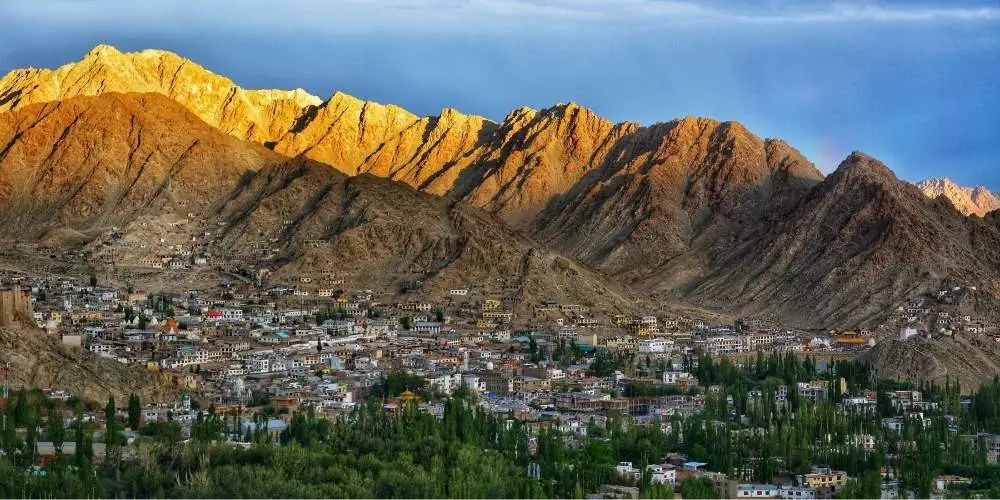
Leh Ladakh
Before you hit the road (or the skies), here’s a little about this rugged wilderness. Leh is the district headquarters of Ladakh, set at a staggering 3,500 meters above sea level. It’s the gateway to stark valleys and winding mountain passes, Tibetan Buddhist monasteries, and warm Ladakhi culture in a landscape that can look as desolate as Alaska yet sings with life.
Once a key stop on the ancient Silk Route, Leh today is a melting pot; adventure seekers, spiritual wanderers, and even winter snow chasers come in search of the same thing: space, silence, and soul.
Leh and The Northern Lights
Leh likes its own weather. Winters (November to February) can be biting with temperatures dropping below -20°C and roads often closed due to heavy snowfall. Certainly dramatic but not for the faint-hearted or unprepared.
Come late spring, May to early October, the skies clear, roads open, and the grass returns to the valleys. This is widely considered the best time to visit Leh Ladakh for:
- Sightseeing with comfortable temperatures (daytime highs around 15-25°C)
- Clear views of the snow peaks
- Vibrant local festivals like Hemis and Ladakh Festival
- Accessible roads to Nubra Valley and Pangong Tso
Avoid the monsoon months (July and August) as flash floods and landslides can disrupt travel here.
Getting to Leh
By Air: The easiest way is to fly. Kushok Bakula Rimpochee Airport in Leh connects directly to Delhi, Srinagar, Jammu, and other Indian cities. Book early, especially for flights in peak season.
By Road: If you’re craving the ultimate road trip, drive or take a bus across iconic mountain passes like Zoji La and Khardung La. The road trip from Srinagar to Leh or Manali to Leh is challenging but rewarding.
Note: Permit and acclimatization time is extremely important.
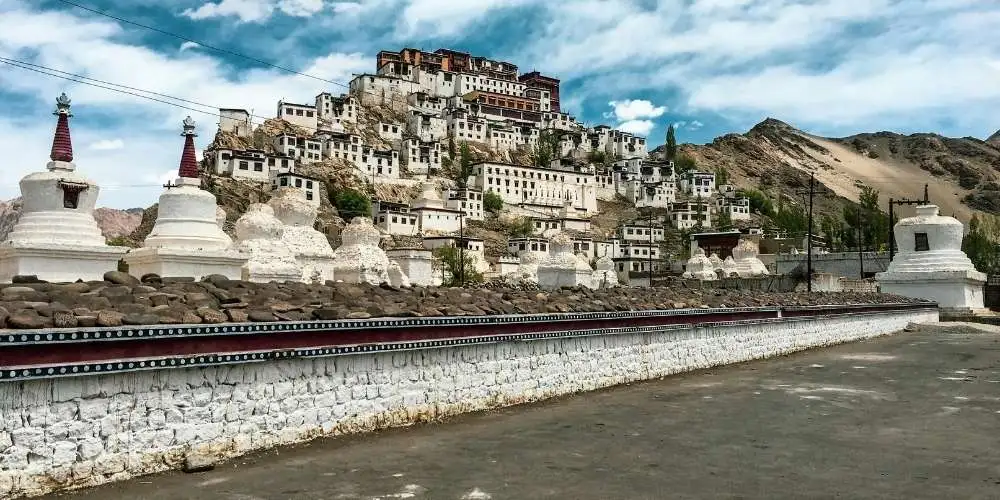
How to Prepare for Leh’s Weather and Stay
At 11,500 feet, your body will feel the thin air instantly. Symptoms like headache, nausea, breathlessness are common and are a part of Acute Mountain Sickness (AMS).
Dos:
- Acclimatize slowly; rest the first two days in Leh.
- Drink plenty of water and avoid alcohol.
- Move slowly when trekking.
- Carry basic medicines like Diamox (consult doctor first!).
- Wear layers; the sun can be dazzling by day but nights are freezing cold.
- Never skip good sun protection, sunscreen, sunglasses, and cap.
Packing Musts:
- Woollens and thermals
- Sunglasses and sunscreen (UV rays up high are intense)
- Comfortable hiking boots and gloves
- Waterproof jacket and caps for sudden rains or winds
Places To Visit in and Around Leh
- Nubra Valley: Just north of Leh, this cold desert valley enchants you with sand dunes, double-humped Bactrian camels, and oasis-like villages. Visit Diskit Monastery with its giant Buddha statue overlooking the valley, and don’t miss Hunder Sand Dunes’ unique landscape.
- Pangong Tso: Ever seen an endless lake changing hues from turquoise to deep blue? Pangong Tso is that mystical place perched at over 14,000 feet on the Indo-China border. You can camp along the lake, watch the stars, and experience pure solitude.
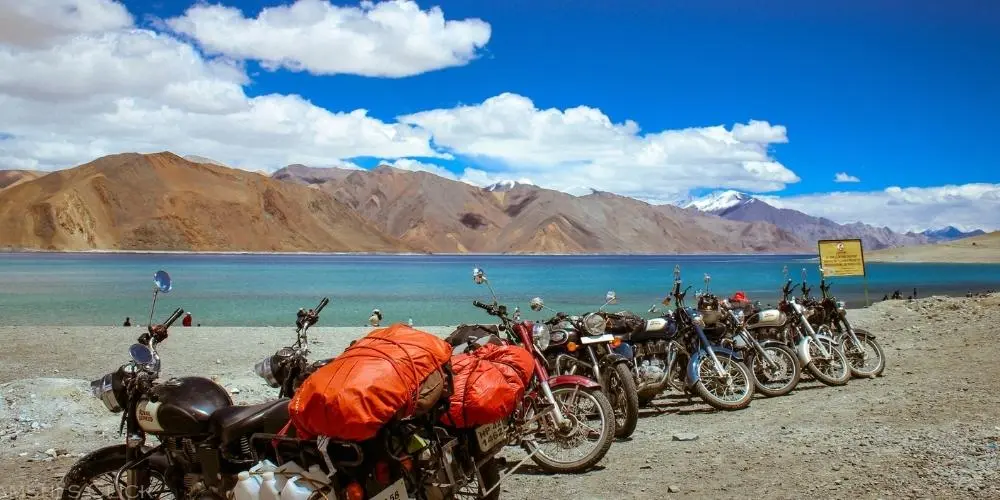
Pangong Tso Lake
- Kargil War Memorial: A solemn, moving tribute to soldiers who fought during the 1999 conflict between India and Pakistan. It’s beautifully maintained and reflects the spirit of courage and sacrifice.
- Leh Palace: A ruined royal palace offering panoramic views of the town and surrounding mountains, with a collection of ancient artifacts inside.
- Thiksey Monastery & Hemis Monastery: Both monasteries are splendid examples of Tibetan Buddhist architecture and culture, with vibrant festivals, prayer halls, and monks in prayer.
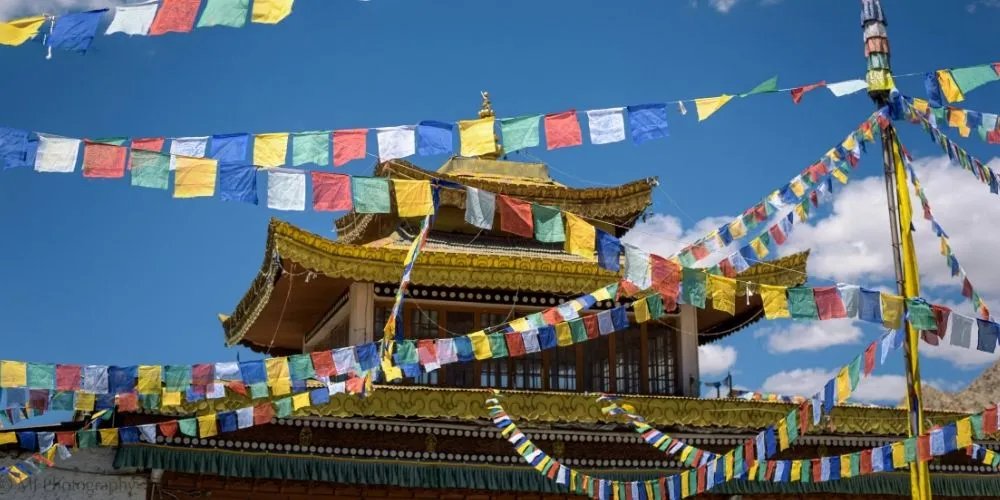
- Shanti Stupa: A white-domed peace pagoda glowing at sunset, offering 360-degree views of Leh and beyond.
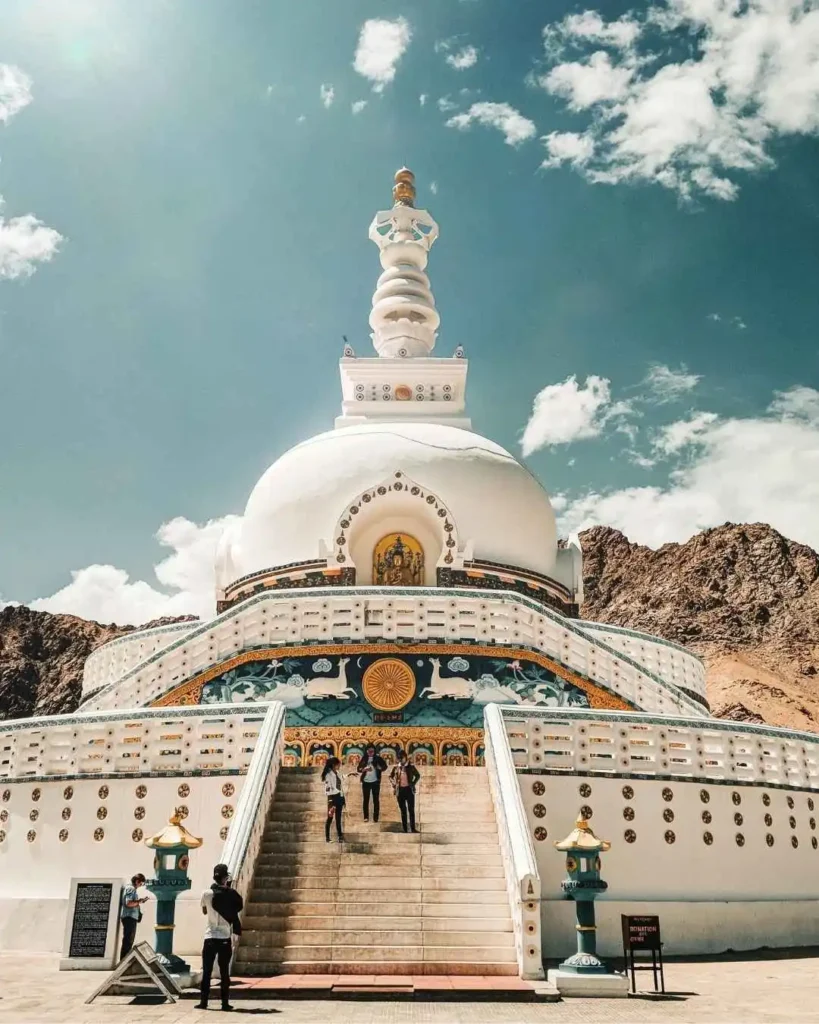
Shanti Stupa
- Magnetic Hill: The famous optical illusion where your vehicle appears to defy gravity by rolling uphill on a flat road.
Accommodations in Leh
From rugged campsites on Pangong to starry-night guesthouses in Nubra and cozy colonial-style hotels right in Leh, options are as varied as the landscape.
- Luxury: The Grand Dragon Ladakh, The Zen Ladakh, and The Stok Palace Hotel offer plush stays with mountain views and warm service.
- Mid-range and Budget: Hotel Chanaya, Hotel Karma Inn, Hotel Singge Palace, and Ladakh Sarai provide comfort without burning holes in your wallet.
- Camps: For the real adventure, book tented camps along the Nubra Valley or Pangong lake that let you sleep under the stars.
- Guest Houses and Homestays: Stay with a warm and welcoming family for an up close and personal look at the life and culture in the cleanest habitat in the country.
Food & Vibes
Leh’s food is a mix of Ladakhi, Tibetan, and local flavours. Taste momos, thukpa (noodle soup), skyu (traditional noodle stew), butter tea, and apricot jam from local farms. Wander markets for pashmina shawls, hand-knotted carpets, and silver jewellery crafted by skilled artisans.
Leh is Not Just a Trip, It’s a Transformation!
Leh Ladakh is a place where you leave the noise behind and find something bigger than the mountains; the quiet in your own breath. Whether you glide past monasteries, watch ibex on hills, feel the pangs of high altitude, or sit by frozen lakes watching colours shift in twilight, Leh speaks in a language beyond words.
Plan with care: register your yatra permits, pack smart, and embrace the slow magic of high altitudes. From the tales of the Mahabharata echoed in ancient monasteries to the raw beauty of Nubra Valley and the hypnotic waters of Pangong Tso, Leh isn’t just a destination; it’s a meeting point of earth, sky, and spirit. That’s why this Himalayan jewel, rightly called the ‘Northern Lights of India,’ will shine in your stories forever.
By: Anushka Singhal
